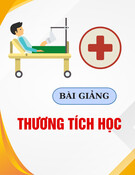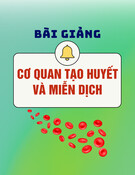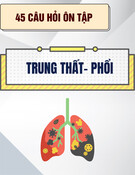
Dao Thi Thu Hien
Journal of Health Sciences
DOI: https://doi.org/10.59070/jhs020624020
Volume 2, Issue 6 – 2024
Copyright © 2024 Journal of Health Sciences 14
Keratoconus: Epidemiology and clinical characteristics at Ho
Chi Minh Eye Hospital
Dao Thi Thu Hien1*
Keratoconus is a non-inflammatory
corneal ectasia disease characterized by
progressive thinning of the central or
paracentral cornea and the protrusion of the
anterior corneal area with cone shape [1]. In
the early stage, visual acuity gradually
decreases due to changes in refraction, and
in the late stage, the visual acuity is affected
seriously by the changes in corneal
structure [2]. The causes of disease have not
yet been clearly determined [1].
Keratoconus could be diagnosed by clinical
examination combined with corneal
topography. Nowadays, screening and
detecting patients with keratoconus is
extremely important when refractive
surgery is increasingly developed. Around
the world, there have been several studies
on keratoconus; however, in Viet Nam,
there are not many studies on this disease,
and the information on keratoconus
characteristics is limited, and corneal
topography machines are not available in
many places, therefore, patients are
normally diagnosed at a late stage, directly
affecting the effectiveness of the treatment
result [3]. Therefore, we had some
questions: “Whose patients have more
chance of having keratoconus? What are the
typical clinical characteristics of the
INTRODUCTION
ABSTRACT
Background: Keratoconus is a non-inflammatory corneal
ectasia disease that can lead to visual impairment. Therefore,
detecting symptoms of keratoconus is very important. So, we
conducted this study to describe the epidemiology and clinical
characteristics of keratoconus at Ho Chi Minh City Eye Hospital.
Methods: This is a cross-sectional study of keratoconus cases
diagnosed at the Optometry department in Ho Chi Minh Eye
Hospital. Results: Keratoconus was diagnosed in 124 eyes of 64
patients. The mean age was 20.7 ± 5.2 and the ratio between
male and female patients was 1.5 : 1. The majority of patients
had the habit of rubbing their eyes (71.9%), 45.3% of patients
had allergic conjunctivitis and 9.4% had relatives with
keratoconus. Most of the patients had keratoconus in bilateral
eyes. Wearing spectacles helps improve visual acuity, and the
group without clinical symptoms had better vision. The most
common symptom was scissor reflex (67.7%), followed by
Fleisher ring (52.4%), Rizzuti sign (49.2%), and Vogt’s striae
(21.8%); 21.8% of eyes had no clinical symptoms. Conclusions:
The percentage of patients who habitually rubbed their eyes
was significantly high. Allergic conjunctivitis was a prevalent
comorbidity in patients with keratoconus. Scissor reflex,
Fleisher ring, Rizzuti sign, and Vogt’s striae were common signs
of keratoconus.
Keywords: keratoconus, rubbing eyes.
1 Hai Phong University of
Medicine and Pharmacy, Vietnam
* Corresponding author
Dao Thi Thu Hien
Email: dtthien@hpmu.edu.vn
Received: June 17, 2024
Reviewed: June 26, 2024
Accepted: September 4, 2024






























